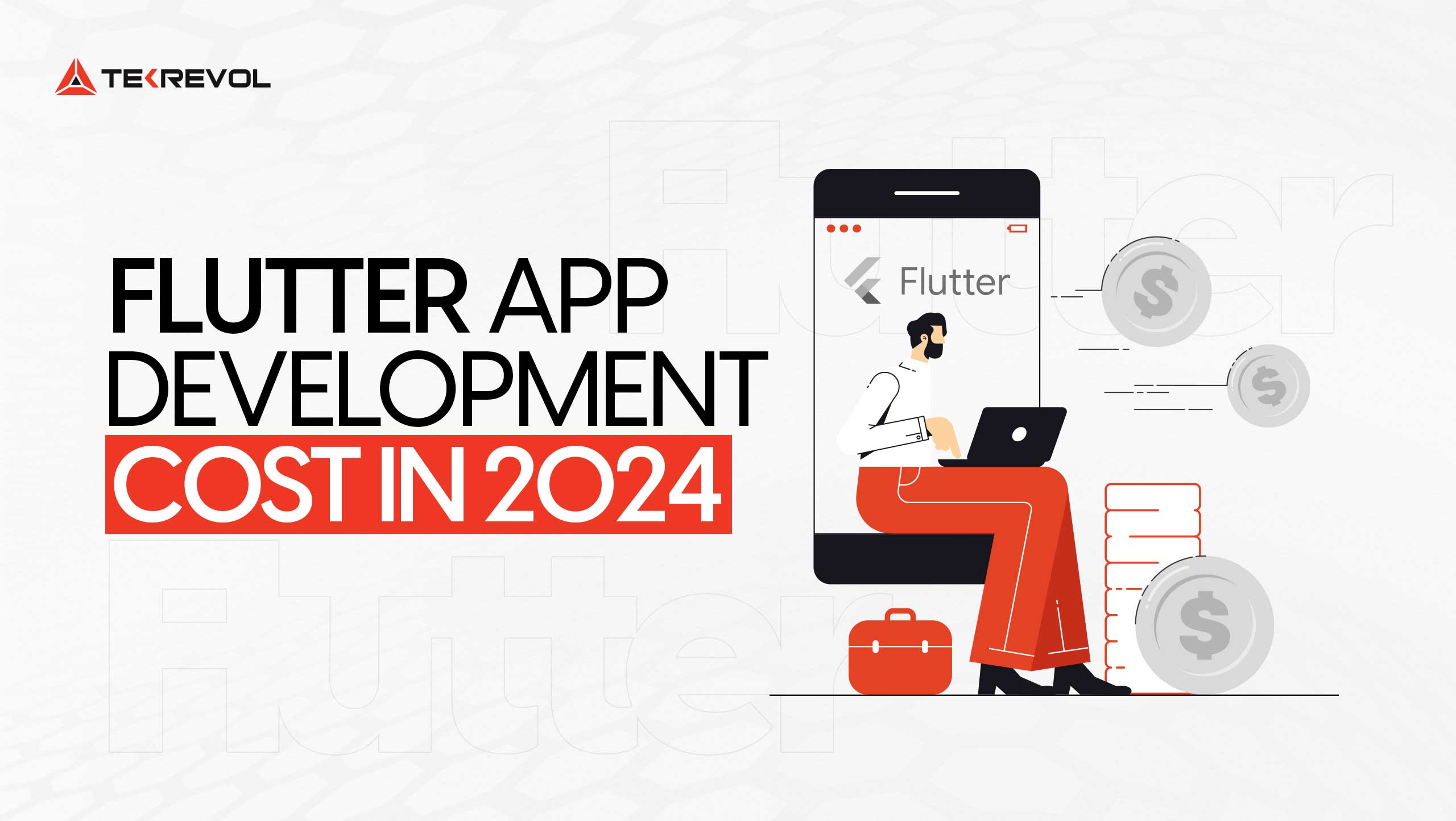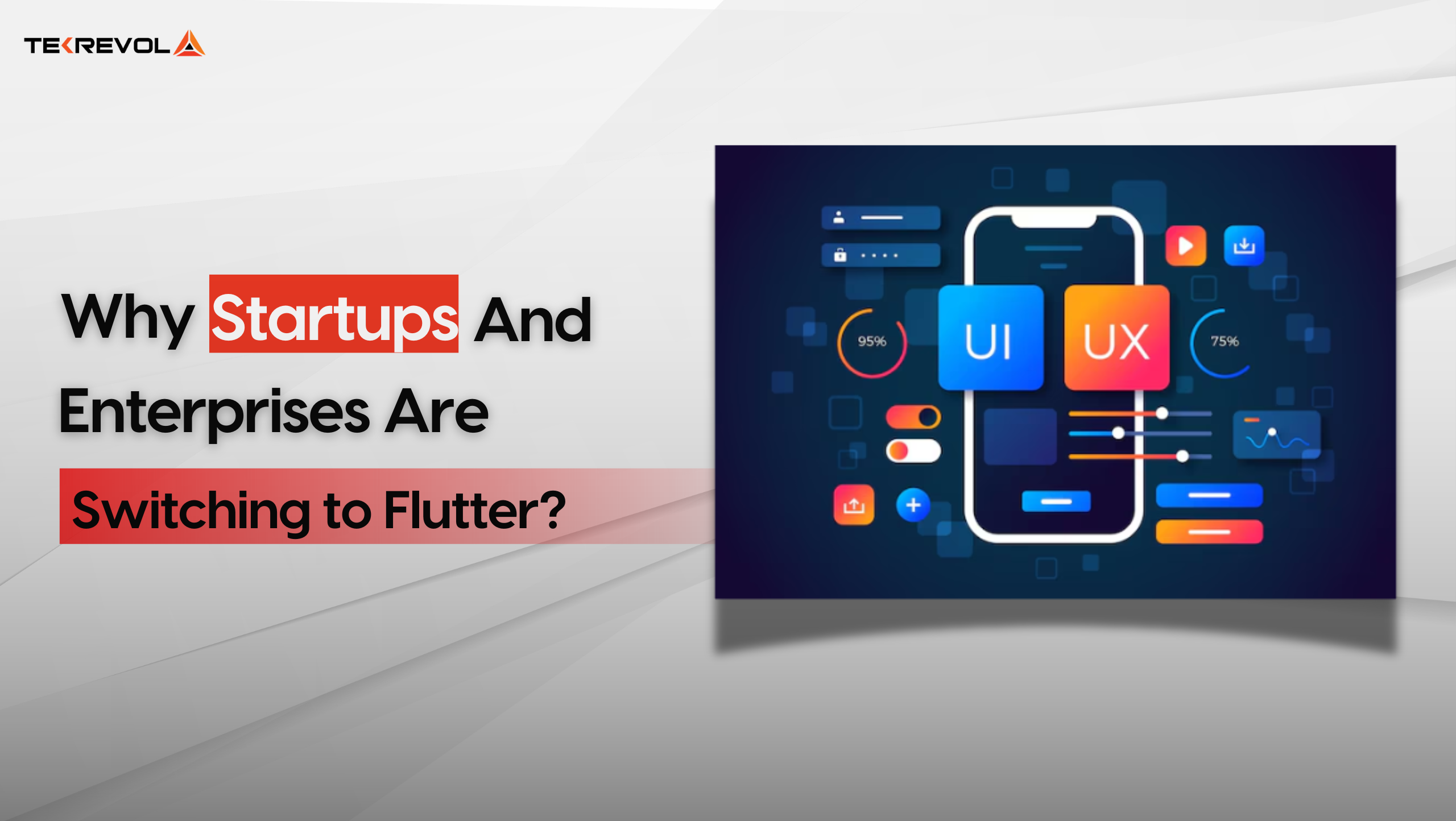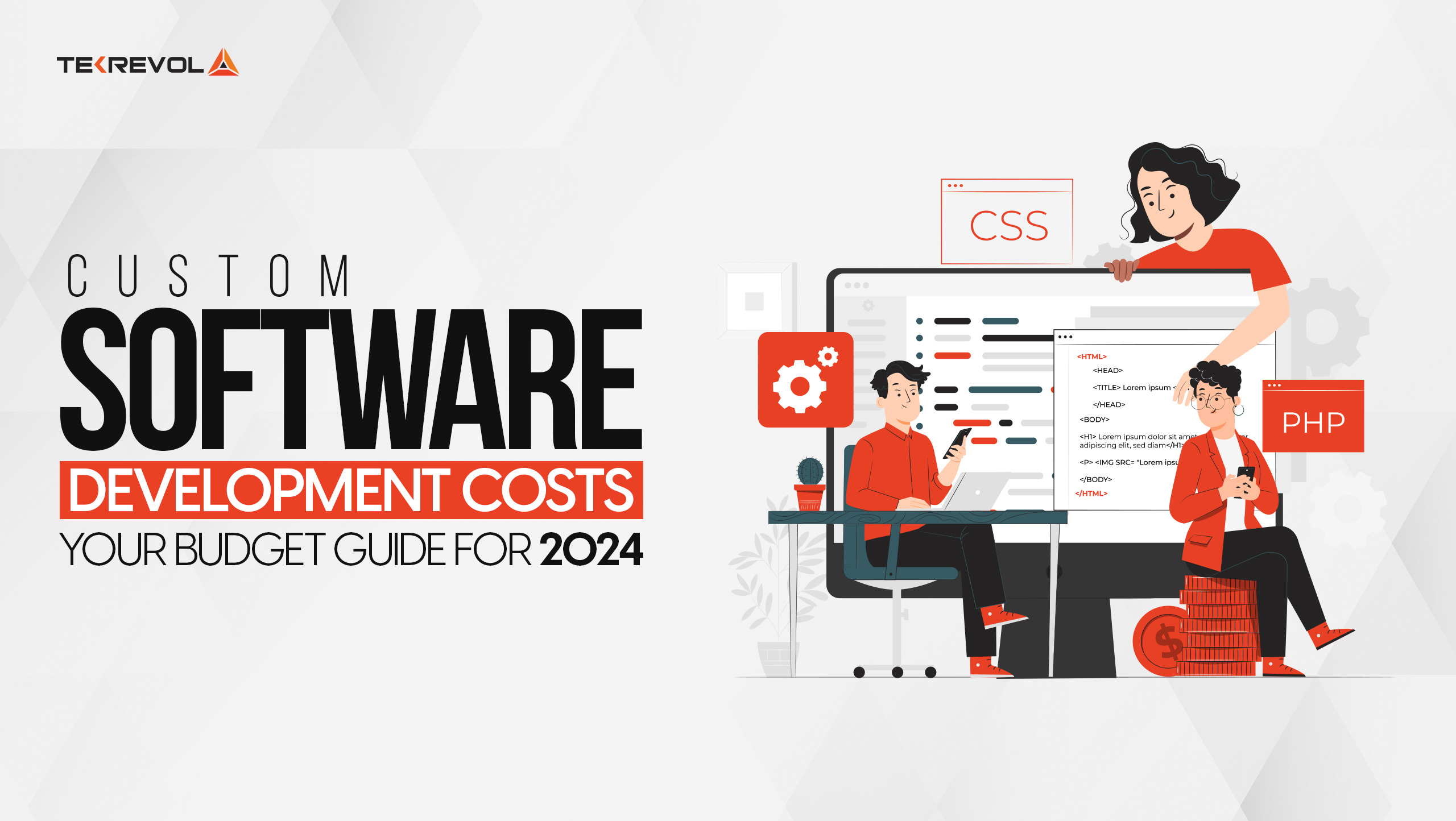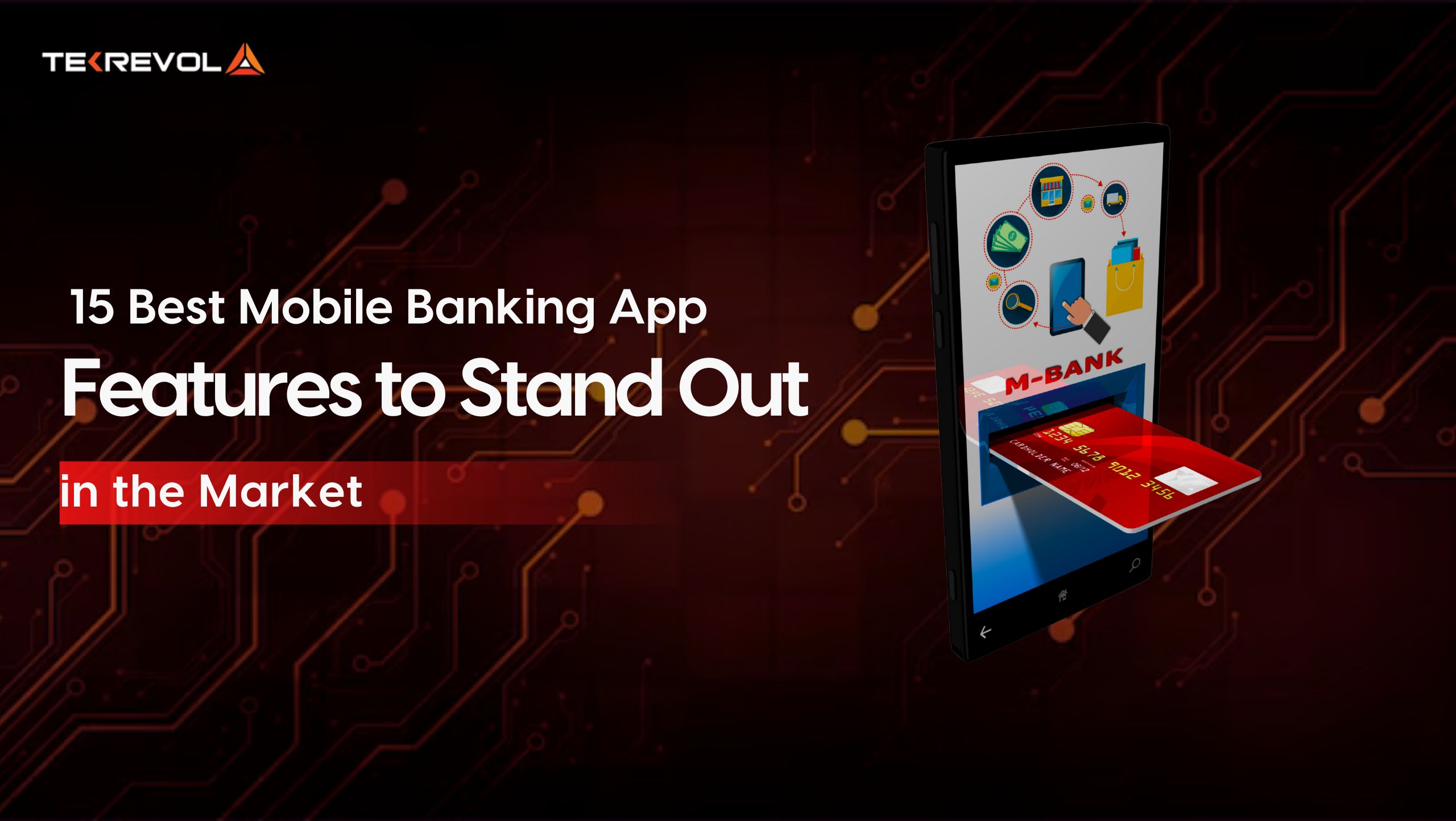Around 46% of developers globally trust Flutter for cross-platform app development. And why shouldn’t it be the favorite application development framework? Google revolutionized cross-platform development by introducing Flutter as an open-source framework in 2017 with the use of a single codebase.
Flutter offers a high-performance rendering engine for fast load times, Cupertino widgets to comply with Apple’s Human Interface Guidelines, and access to iOS APIs for native-like functionalities—making it a constant favorite among cross-platform app developers.
However, popularity and advanced functionalities aren’t the only factors to consider when choosing Flutter for app development. Cost is a major aspect of any project.
In this comprehensive guide, we’ll break down the Flutter app development cost based on various factors that directly and indirectly influence the application development budget.
What is the Average Flutter App Development Cost?
Keeping it simple, Flutter app development typically costs between $30,000 – $250,000 or more, depending on the complexity and feature stack.
Here’s the Flutter app development cost breakdown per app complexity, detailing, and development timeline.
| Flutter App Complexity | Defining Aspects | Development Timeline | Development Timeline |
|---|---|---|---|
| Simple Flutter App | Basic UI, MVP features | 2-3 months | $30,000-$50,000 |
| Intermediate Flutter App | Custom UI, moderate functionality | 6-12 months | $50,000-$100,000 |
| Advanced Flutter App | Complex UI, advanced features | 6-12 months | $100,000-$200,000 |
| Enterprise Flutter App | Bespoke UI, high-complexity features | 12-16 months | $200,000-$250,000+ |
These price ranges are general estimates that can vary from project to project. Let’s look into the key cost determinants to understand better how much your Flutter app development might actually cost.
How much will Flutter app development cost?- Talk to our experts and get an instant estimate on Flutter app development cost. Our free first consultant has you covered!
Key Factors that Determine Flutter App Development Cost
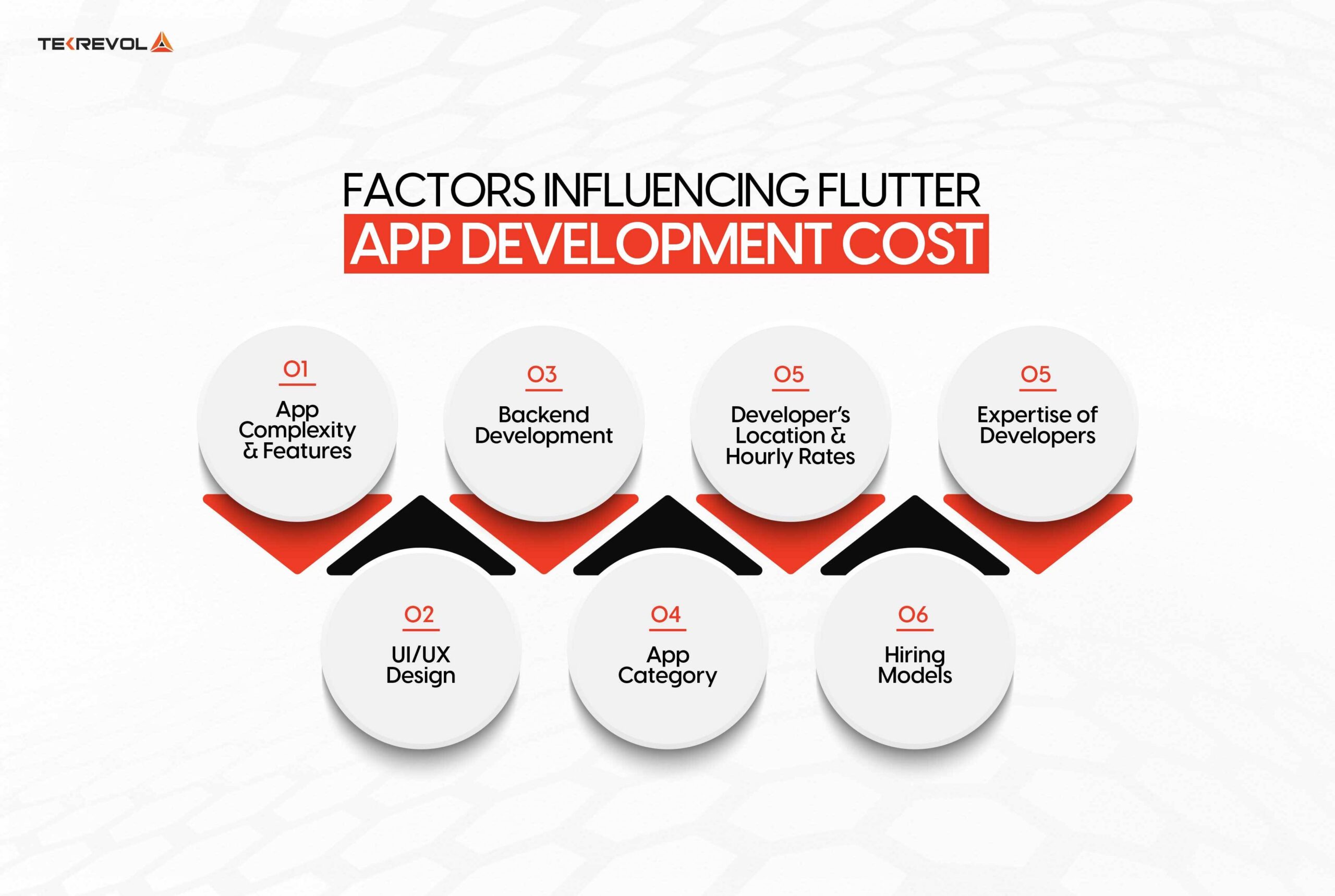
1. App Complexity & Features
App complexity and features are the primary drivers of development cost. The more intricate the app, the more resources it demands.
- Simple Flutter Apps require basic UI and MVP features, costing between $30,000-$50,000 and taking 2-3 months. These apps usually include fundamental functionalities with straightforward interfaces.
- Intermediate Flutter Apps involve custom UI and moderate functionality, priced at $50,000-$100,000 over 3-6 months. They often need additional features like third-party integrations, user authentication, and more complex data management.
- Advanced Flutter Apps have complex UI and advanced features, ranging from $100,000-$200,000 with a 6-12 month timeline. These apps might include advanced user interactions, real-time updates, and extensive backend services.
- Enterprise Flutter Apps feature bespoke UI and high-complexity elements, costing $200,000-$250,000 and taking 12-18 months. They typically require high scalability, robust security, and extensive integration with other systems.
2. UI/UX Design
UI/UX design plays a crucial role in user engagement and satisfaction. Effective design requires thorough research and meticulous execution.
| Workflow Stages | Average Cost |
|---|---|
| Pre-design Activities & Research | $500-$700 |
| UI Preparation | $200-$1,000 |
| UX Creation | $5,000-$10,000 |
| Brand Identity Design | $5,000-$10,000 |
| Images/Animations | $1,000-$10,000 |
- Pre-design Activities & Research set the foundation for successful UI/UX design, costing $500-$700. This phase includes understanding user needs, market analysis, and setting design goals.
- UI Preparation involves creating the visual layout, priced at $200-$1,000. It focuses on the app’s look and feel, ensuring an appealing and intuitive interface.
- UX Creation costs $5,000-$10,000, aiming to make the app easy to use and navigate. This stage includes wireframing, prototyping, and user testing to optimize the user experience.
- Brand Identity Design reinforces the app’s visual appeal, costing $5,000-$10,000. It includes designing logos, color schemes, and other brand elements to ensure a cohesive look.
- Images & Animations enhance user interaction, costing $1,000-$10,000. These elements add dynamism to the app, making it more engaging.
3. Backend Development
Backend development is vital for handling server operations, databases, and application logic. Efficient backend infrastructure ensures seamless data processing, user authentication, and real-time updates.
Advanced backend features, such as cloud integration, microservices architecture, and robust security measures, increase complexity and costs.
A well-designed backend is crucial for scalability and to accommodate more users and features without performance degradation. Security is also a major concern, as backend systems handle sensitive data that must be protected against breaches and attacks.
4. App Category
The app category significantly impacts development costs due to varying functional and security requirements.
- E-commerce Apps need secure payment gateways, user authentication, and inventory management, increasing development complexity and cost. They often require integration with third-party services like payment processors and shipping carriers.
- Social Networking Apps demand real-time communication, multimedia handling, and extensive user data management. These features require robust backend services and scalable architecture to handle high user loads and data traffic.
- Healthcare Apps must comply with stringent regulatory standards, such as HIPAA in the United States. This compliance necessitates advanced security measures and thorough testing to ensure data privacy and integrity, driving up development costs.
- On-demand Service Apps require real-time tracking, user authentication, and payment integration. These apps, used for services like ride-hailing or food delivery, need reliable backend support and robust APIs for smooth operation and user satisfaction.
- Educational Apps often need interactive features, multimedia content, and user progress tracking. They may require integration with learning management systems (LMS) and adherence to accessibility standards, adding to development complexity.
- Financial Apps must prioritize security and compliance with financial regulations. Features like encrypted transactions, secure login, and real-time updates are essential, driving up development costs.
5. Developer’s Location & Hourly Rates
Developer costs vary greatly by location, influencing overall project expenses.
| Location | Hourly Rates of Flutter Developers |
|---|---|
| Central & Eastern Europe (CEE) | $50-$60/h |
| Western Europe | $50-$200/h |
| North America | $75-$250/h |
| Latin America | $30-$50/h |
| Australia | $100-$150/h |
| Africa | $20-$45/h |
| Asia | $25-$40/h |
If you pick outsourcing or staff augmentation work arrangements, you can further reduce your app development costs by researching the development rates in different locations.
That’s because tech talent and IT resources charge differently because of their local tax requirements and currency conversions.
For reference, Flutter app developers in the UK and other parts of Europe typically have high hourly rates as compared to developers in the Asia or Africa.
6. Hiring Models
Businesses and even startups can choose from three different hiring models and development work arrangements.
·In-House Team
This option will give you more control and flexibility with your flutter project, but the definite con here is the HR costs. You need to recruit technical professionals and pay them full-time wages with benefits.
So, unless you are an established organization with cashflows dedicated to hiring full teams and meeting recruitment costs, reconsider this choice.
· Outsourcing
This is the second option and the most common one that most startups, as well as mid-sized businesses, typically follow. You get to hire a Flutter app development company after ensuring they have these 5 resources in their teams:
- UI and UX designer with knowledge of Material Design
- Flutter developer
- Project manager
- Testing & QA professional
- Business analyst
These companies usually start with understanding your project requirements. Then they align a business analyst and project manager for coordination and updates about the progress of your flutter project.
Also, companies that work on outsourced projects will tell you a fixed price for the entire project or charge according to the number of hours you wish them to dedicate to your app.
·Staff Augmentation
This hiring model more or less works like a subscription model for your app development team. You choose to work with specific Flutter teams and pay them hourly charges.
This model gives you the highest level of flexibility and control while allowing you to manage your costs according to your development stages and milestones.
7. Expertise of Flutter Developers
Developer expertise significantly impacts project quality and efficiency. Experienced developers command higher rates but deliver superior results, potentially reducing long-term costs by minimizing errors and development time.
| Flutter App Development Team | Simple Flutter App | Medium Flutter App | Complex Flutter App |
|---|---|---|---|
| Developers (Junior, Middle, Senior) | $10,000-$20,000 | $20,000-$40,000 | $50,000+ |
| QA Specialist | $8,000+ | $10,000+ | $50,000-$100,000 |
| UI/UX Designers | $4,000-$5,000 | $5,000-$7,000 | $10,000-$15,000 |
| Project Manager | $5,000-$7,000 | $10,000-$15,000 | $15,000+ |
| Business Analyst | $2,000-$3,000 | $5,000-$8,000 | $10,000+ |
| DevOps | $2,000-$4,000 | $5,000-$7,000 | $10,000+ |
A well-rounded team includes junior, middle, and senior developers, QA specialists, UI/UX designers, project managers, business analysts, and DevOps engineers. Each role brings specific expertise, ensuring comprehensive and efficient project execution.
- Get an expert Flutter app cost evaluation!
- Talk to our experts for a detailed Flutter app cost estimate.
- Get an Estimate
Why Do Businesses Choose Flutter App Development?
Tekrevol’s business analysts consider Flutter the ideal option for startups to enterprise-grade organizations. But if you need social proof, know that eBay, Tencent, Toyota, and Stadia are amongst the companies that took a quick leap in adapting Flutter because of its cross-platform capabilities.
Here are 7 more advantages to choosing Flutter app development.
1. Free & Open Source
Flutter was launched and operated by Google. While it is open for everyone globally to use for any screen and app of their choice, it is also free. Most importantly, you don’t need two different teams to create apps for your overall target audience. Just one team highly experienced in Flutter will do good.
2. Developer-Friendly
It has a super developer-friendly nature that allows them to build, test and deploy software applications and programs from a single codebase – eliminating the need to rewrite code for different devices.
Companies like eBay motors turned to Flutter when they had to manage the development process with a limited team and time but also wanted an app for Android and iOS that delivered the same fluid user experience.
3. Speed Up Development
So, with this one obvious advantage of being cross-platform, Flutter boosts development speed. As a business, if you want to quickly launch an app, Flutter makes it possible to develop and publish one within 2 to 3 months.
4. Real-Time Testing & QA
The Hot Reload option allows developers to test their programming fixes in real time. QA professionals use emulators to analyze the quality of debugging and fixes they have made to the code.
With other technologies, these changes take minutes to update, but with Flutter, it’s a matter of seconds.
5. Graphic-Centric
Flutter supports high-end graphics. With libraries and tools like Material Design, it helps create user interfaces that feel consistent and visually appealing on different devices and a diverse target audience.
6. Fast Loading
Despite its high emphasis on graphics, Flutter apps load as fast as any other mobile apps. This factor influences the user experience, and that’s what most target users are directly or indirectly look for in a mobile app.
7. MVP-Friendly
Start-ups or scale-ups seeking investments need either of the two: a prototype with a strong business plan or an MVP. Of course, the latter, Minimum Viable Product, is a better option because investors or venture capitalists can actually see your app performing.
They can use the app for themselves, see how practical its user interface and experience are, and whether there is space for your app in the market.
The time and cost advantages of Flutter allow start-ups to directly penetrate the market with an MVP instead of building expensive prototypes and presentations with facts and figures.
Additional Costs for Flutter App Development
When planning the budget for your Flutter app, it’s crucial to consider the additional costs beyond the initial development. These expenses ensure your app remains competitive, secure, and functional over time. Ignoring these factors can lead to higher long-term costs and potential revenue loss.
| Cost Factor | Estimated Cost |
|---|---|
| Maintenance & Support | 15-20% of initial development cost annually |
| Third-Party API Integrations | Varies with complexity; higher for advanced APIs |
| Third-Party API Integrations | Varies with complexity; higher for advanced APIs |
| App Store Release | Google Play: $25 (one-time), Apple App Store: $99/year |
| Server Space Rent | $1650/year for a server with 8-core CPU and 32 GiBs RAM |
| Security Measures | Initial setup: $1,000-$5,000, ongoing monitoring and updates: varies |
Here are the core additional Flutter app development cost constituents you should account for in your Flutter app development budget.

1. Maintenance & Support
App maintenance and updates are crucial for retaining user engagement and ensuring the app remains competitive. Applications that frequently update with new features and improvements maintain their positions in app stores. Lack of updates can lead to stagnation and user abandonment.
Developer Involvement
Ideally, hire the original app developers for maintenance since they are familiar with the codebase. If not, ensure you have detailed documentation.
Cost Implications
Maintenance costs typically range from 15-20% of the initial development cost annually. Over time, these costs can rise as the app grows and more updates are needed.
Investment Justification
Regular updates may seem costly but are necessary for generating revenue and retaining user interest.
2. Third-Party API Integrations
Third-party API integrations are essential for adding advanced functionalities to your app. These integrations facilitate data interchange between your app and other services, enhancing the app’s capabilities.
Complexity & Costs
The complexity of the required APIs will affect costs. Basic APIs are cheaper, but advanced integrations will increase the overall expense.
Long-Term Considerations
As your app’s usage grows, more robust and advanced APIs might be needed, further adding to the costs.
3. Release to App Stores
Releasing your app to major platforms like Google Play and Apple App Store involves specific costs and time investments. Each platform has its own fee structure and requirements.
Platform Fees
- Google Play – One-time fee of $25.
- Apple App Store – Annual fee of $99.
Release Effort
The release stage can take 190-270 hours, costing approximately $9,500-$13,500 at a rate of $50 per hour.
4. Server Space Rent
Adequate server space is essential for handling user-generated data and ensuring smooth app performance. Poor server performance can lead to high response times and data breaches, negatively impacting user experience.
Server Requirements
Reliable servers with strong protection systems are crucial. For instance, Amazon EC2 offers robust solutions.
Cost Estimates
A server with an 8-core CPU and 32 GiBs of RAM operating 24/7 costs around $1650/year, according to AWS Price Calculator.
5. Security Measures
Implementing robust security measures is essential to protect user data and maintain app integrity. Security protocols help prevent data breaches, fraud, and other malicious activities.
Initial Setup
Investing in advanced security frameworks and encryption methods during development is crucial. This might include SSL certificates, secure coding practices, and regular security audits.
Ongoing Costs
Continuous monitoring and updating of security measures are necessary to combat new threats. This includes regular vulnerability assessments and patch management.
Cost Estimates
Depending on the app’s complexity, initial security setup can range from $1,000 to $5,000, with ongoing annual costs for monitoring and updates varying based on the level of security required.
Understanding these additional costs is crucial for accurate budgeting and long-term planning in Flutter app development. Properly accounting for maintenance, third-party integrations, app store release fees, and server space rent will ensure a more comprehensive cost estimation and smoother development process.
Strategies to Optimize Flutter App Development Cost
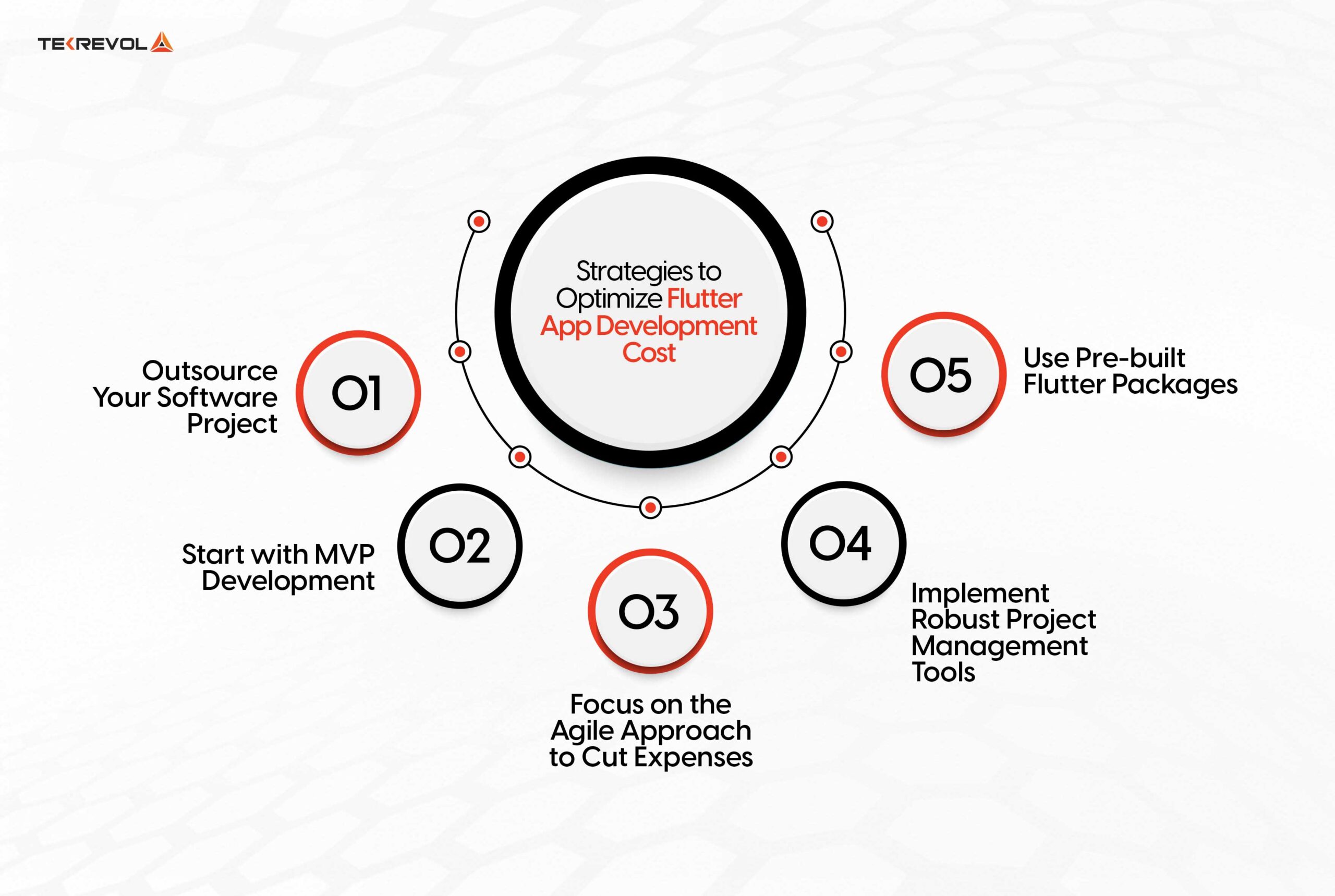
Flutter app development costs can escalate quickly without proper management. Implementing effective strategies ensures a high-quality app without exceeding your budget. Below are essential ways not to neglect if you do not want to override your flutter app development budget.
1. Outsource Your Software Project
Outsourcing your Flutter app development is an efficient way to manage costs and time. Engaging outsourced Flutter developers is often faster and more cost-effective than recruiting specialists in-house.
Outsourcing certain projects to external vendors lightens the workload of the in-house team and bring valuable insights. It especially if the app targets an international audience. Additionally, outsourcing offers long-term savings by employing IT experts from regions with favorable hourly rates.
2. Start with MVP Development
Beginning with a Minimum Viable Product (MVP) is a smart approach to control costs. Focus on essential features that deliver an optimal user experience. Conduct market research to understand your target audience’s needs.
Hitting the market with MVP features helps you test the app’s viability better and gather early user feedback, and make necessary adjustments without overspending.
Fast-Track Your Flutter MVP Development- Get your MVP Flutter app ready within 2 months.
3. Focus on the Agile Approach to Cut Expenses
Using an Agile development methodology helps in managing costs effectively. Agile development is test-driven, allowing for adjustments throughout the project. This approach minimizes the cost of bug fixing and ensures the project remains flexible.
IT staff augmentation, dedicated teams, and the Time and Material model are effective partnership models within the Agile framework, providing flexibility in scaling your development team and managing project requirements.
4. Implement Robust Project Management Tools
Employing advanced project management tools streamlines the flutter app development process and controls costs. Tools like JIRA, Trello, or Asana offers features for task management, progress tracking, and collaboration.
These tools help maintain transparency, reduce miscommunication, and keep the project on track. Effective project management tools prevent scope creep and keep the development process organized, ultimately saving time and money.
5. Use Pre-built Flutter Packages
To save development time and costs, consider using pre-built Flutter packages available in the Flutter ecosystem. These packages offer ready-made functionalities that can be integrated into your app and significantly cut the need for custom development.
Leveraging these packages speeds up the development process and reduces the overall cost. Always evaluate the reliability and performance of these packages to ensure they meet your app’s requirements.
How to Win Over More Users Across Platforms?
Agile Development Methodology
Agile development divides the project into manageable segments for incremental feature delivery and rapid user feedback. This iterative approach ensures continuous improvement based on real-world usage data – performant apps across platforms and devices.
Minimum Viable Product (MVP)
Launching with an MVP allows quick time-to-market with core features. This strategy facilitates immediate user feedback, guiding subsequent development phases. Enhancements are made based on performance insights and user needs.
Performance Insights & Scaling
Analyzing user interactions and feedback from the MVP phase identifies improvement areas. Scaling development based on these insights ensures the app evolves to meet evolving user personas and mobile devices to keep the application relevant and engaging.
Reliable Flutter App Development Company
Selecting a reliable Flutter development company is crucial. Look for proven expertise, flexibility, and use of cutting-edge technology. Skilled engineers with diverse industry experience provide valuable insights and innovative solutions, aligning functionality with market needs.
Why Choose TekRevol for Flutter App Development?
TekRevol stands out as a leading Flutter app development company in the USA. With a track record of exceptional success, TekRevol brings technical prowess and industry-specific knowledge to every project.
Our in-house team of skilled Flutter engineers is adept at using only the most useful technologies to create robust, scalable, and high-performance apps that perfectly fit within the client’s budget. Our expertise across various industries allows us to deliver tailored solutions that meet specific business requirements.
We follow an agile development approach, ensuring flexibility and responsiveness to changing project needs. By starting with an MVP, we enable quick time-to-market and gather valuable user feedback early in the development process. Our focus on continuous improvement and scaling based on performance insights ensures that your app evolves to meet modern user needs.
Request your custom Flutter app cost estimate now!- Our team is ready to help you with Flutter app development cost calculation.

 3867 Views
3867 Views July 31, 2024
July 31, 2024